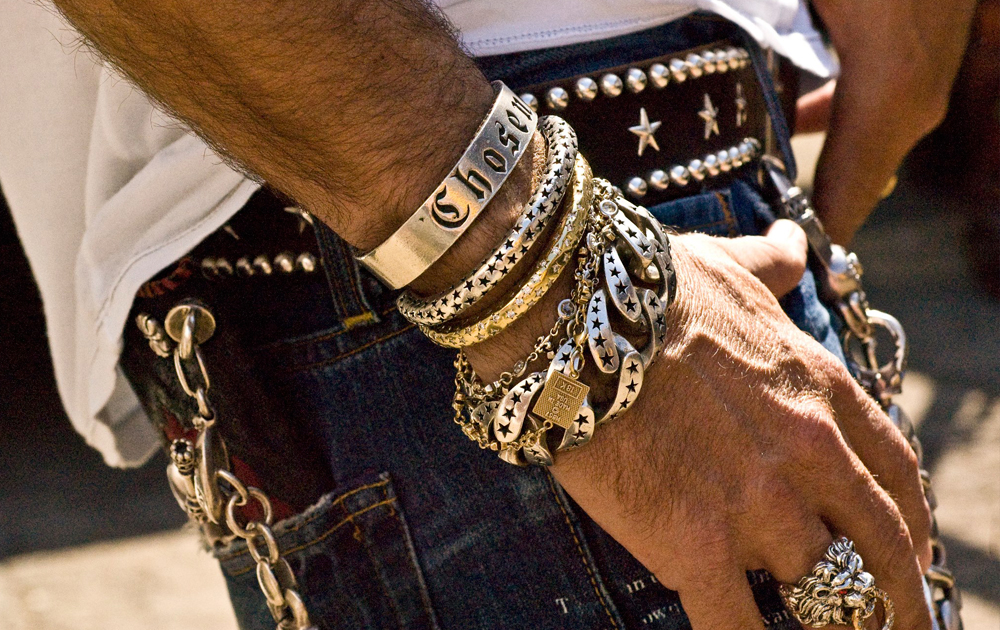Although some men today may shun the idea of wearing jewellery, archaeological evidence shows that it was once very popular. Throughout the ages men w
Although some men today may shun the idea of wearing jewellery, archaeological evidence shows that it was once very popular. Throughout the ages men wore rings, broaches, necklaces and more to express their style, wealth and status, and even for protection and good luck. The styles of these men’s trinkets have evolved over the centuries and can still be seen in antique men’s jewellery from the Victorian, Edwardian, Art Deco and mid-century eras.
Historically, jewellery for men was more elaborate than for women. During the Stone Age, men wore talismans to protect them from danger, and later, they would wear a variety of adornments like teeth, claws, veins and skin. Then they began to use precious metals and gemstones. The first male jewellery trends were influenced by the beliefs of our ancestors, including the Egyptians with their mummies, Vikings with their ax-shaped medallions and more.
By the late 1800’s into the 20th century men’s jewellery was increasingly being worn to accessorise ties, scarves and cravats. This men’s accessory was often called a stick pin and was typically made of gold or silver with colourful gems or glass. It was also common for a men’s stick pin to have a clip on the back which could be attached to the ascot or other neckwear of the day.
The Victorian era was one of the most influential periods in the history of men’s jewellery. During this time technological advances allowed jewellery to be mass produced instead of being painstakingly made by hand, so more men were able to afford to wear it. Consequently, the jewellery designs became bolder and more flamboyant than before. Many jewellery designers drew inspiration from nature and used regular motifs in their creations.
Rings have long been the most popular form of men’s jewellery. In ancient times relatively wide, massive rings were forged from gold and silver for kings and nobility that bore their family crests. They were also used to seal important documents with hot wax. While these practical uses ended with the onset of modern technology, the men’s ring remains a symbol of status. It is frequently seen as an indication of fraternity membership and ranking, or to commemorate military service and graduation.
From the 1920’s onwards, a trend was developed to wear men’s jewellery daily rather than keeping it in a safe for special occasions. This reflects the current philosophy that men’s jewellery is not something to be hidden away, but something to be worn and shared with others.
If you have any antique men’s jewellery, whether it’s a vintage signet ring or a Victorian stick pin, it’s worth looking for a reliable and trusted local antique jewellery buyer to sell your valuable trinkets. These professionals will give you a fair price for your treasures and provide excellent customer service. They will also advise you on any pitfalls to avoid when selling men’s antique jewellery.
The History of Men’s Jewellery
Men’s jewellery has long been a symbol of status, wealth and power. The earliest examples date back to ancient civilisations when signet rings were used by men with authority to stamp their seal on important documents, and talismans depicting animals imbued with magical powers were worn to protect against evil.
In the Victorian era, jewellery became more understated as fashion trends moved away from lavish embellishment. Cufflinks, tie pins and brooches were introduced as a way to accessorise clothing without sacrificing formality, with a new emphasis on nature inspired designs featuring flora and fauna. The aristocracy continued to wear tiaras and necklaces made with precious stones, but these were no longer a mark of prestige.
By the 1930s, technological advances allowed jewellery to be mass produced, reducing its cost and making it more accessible to the general public. The Olympic Games of 1932 saw a boom in sports motifs with combination sets of cuff links, tie clasps and scarf pins designed to commemorate sporting achievements. Brooches with crossed oars and boats proclaiming affiliation as rowers became popular, along with fishing rods and baskets. Croquet, tennis racquets and even skating mementoes were favoured by North American men.
Today, men’s jewellery is as much a fashion statement as it is for women and the choice of pieces can reflect sentimental value or simply be a reflection of one’s personal style. Harry Styles’ reintroduction of pearls at the 2019 Met Gala helped to reclaim their popularity as a men’s accessory, while rapper Lil Uzi Vert recently made headlines for surgically implanting a $24 million pink diamond in his forehead.

COMMENTS